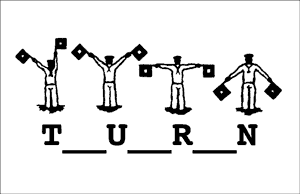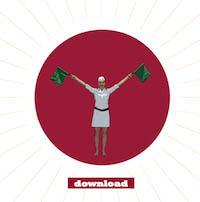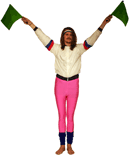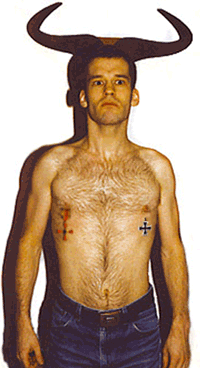-

i-Phone APP
Send FMS with Flagmessenger

My name is Jochen Stechmann, I was born in Germany. After a study of Mathematics at University Hamburg I moved to the Netherlands in 1998. Here I studied contemporary dance at Fontys Dansacademie Tilburg, and then worked for about a decade as dancer, actor and performer with different companies.
In 2010 I finished a trajectory at DasArts – the Master Theatre in Amsterdam. Since then, my main focus is to create my own works. Because of my background, these works are mainly labelled ‘choreographies’, which probably makes me a choreographer.
Since January 2016 I mainly focus on my work as Somatic Coach in Berlin, Wedding
This work is based on the education I received in the Pantarei Approach and the Grinberg Method, with influences from Dance, Yoga and Pilates. Pantarei is an experiential body-based somatic approach, that uses a combination of respectful touch and verbal communication, related to the client’s experience and what is felt in the client’s body by the practitioner. In one on one sessions, Pantarei practitioners guide the client through touch and verbal communication to help them articulate and explore each person’s individual experiences and goals.Since I finished DasArts in 2010 - after almost a decade of working as performer – I mainly focus on being a (dance-) maker. Because of my background, my works are most of the times labelled as 'choreography', but are in fact situated in-between disciplines: theatre, choreography, film and animation, performance, installation, digital art, composition, writing. To resist categorization and to radically blur the boundaries between these sacred disciplines is one of my main artistic goals.
>I experiment with forms of postdramatic theatre that have a certain scientific or documentary character. The works employ techniques of montage, they partially replace choreography with discourse on choreography. They hijack documentary strategies and elements of natural science. In that sense, my approach is quite analytical and at the same time playful. Improvisational practices, a good sense of humour and a conscious play with power relations are core features.
>The results are perceived as intellectually challenging while at the same time being entertaining. I do not aim to please an audience, but I don’t want to bore them neither. A philosophical undercurrent is present in all my works. I try to offer a multiplicity of points of view upon a subject, and those perspectives are deliberately not consistent with each other so the overall picture gets blurred. Art should not reaffirm the opinions that we already have, it should confuse us and challenge us to change our minds.
>In the works with focus on the relation between language and movement (the critical piece, signs), I let the choreography follow grammatical structures or other patterns of language and the meaning created through them. In that process, digital technologies became more and more an essential part of my work. In the near future I want to explore such possibilities for an interactive choreography based entirely on audience participation.
>Furthermore I dare to say that I work with high ethics. I do performing arts because it gives me pleasure, and not because I want to become famous. Part of the artistic process is to increase the transparency to the power-relations that are anyway always present between collaborators. By daring to become transparent about or interests and strategies we undo the pressure of competition and gain access to valuable material.
>Together with Georgian artist Nadia Tsulukidze, I function as artistic director of Dutch dance-theatre company Traum-A. Currently I am in-house choreographer at Dansmakers, the production house for dance in Amsterdam.
Download Choreographer CV ....... HERE
Since 2002 I have has worked and performed with various companies in the field of contemporary dance, performative installations, postdramatic theatre, camera acting and site specific theatre:
-
bösediva (D) ......
Matthaei und Konsorten ......
totalbrutal/Nir de Volff (D) ......
Sanja Mitrobić (NL/RS) ......
Willi Dörner (A) ......
G-netwerk (NL) ......
Vloeistof(NL) ...... Blue Elephant (D/ROK) ......
PerformingUnit/Montazstroj (NL/HR) ......
Das Letzte Kleinod (D) ......
TRASH (NL) ......
Warner en Consorten (NL) ......
Panama Pictures (NL) ......
Theatergroep Aurora (NL) ......
Teatro Pavana (NL) ......
Meine Seele Teatro (E) ......
TukkersConnexion (NL) ......
Theater Anu (D)
Download Performer CV ....... HERE
My choreographies address the relation between of self-perception of the body, and its ‘objective’ materiality. The frictions and tensions between how we feel and experience ourselves, and how we are perceived. Which correspondents on a lot of levels to the relation between emotions and thoughts.
>When we watch performing art, we want to be ‘touched’ our desire is to experience something essentially personal, something genuine and honest. In an attempt to find a valid representation of authenticity, I decided to make improvisation a core feature in my choreographies. In improvisation, we potentially witness and understand ‘on-the-spot” decisions of the performers without feeling fooled. In observing such honest attempts and especially failures, identity is disclosed. To witness and experience failure is for me essential for a deeper understanding of the work. That works best in an environment that is deliberately non-judgemental. To work with improvisation does not mean to abandon craftsmanship. It just requires a different kind of expertise, that focuses rather on the underlying mechanisms that on style or aesthetics.
>To resist categorization and to radically blur the sacred boundaries between disciplines is one of my artistic goals. Art can create an enchanting sense of disorientation. It should never affirm our established mind-set, but make us think, feel and act outside the box. And I am happy when my own work achieves this. In consequence of this it often resists categorization. (Which does not make it easier to sell).
>I work inclusive – in the sense that the created works and practices I create can be executed by everyone for their own benefit and experience. It is about finding a practise, a technique that creates a collective consciousness without employing mechanics of exclusion. In that space, high quality artistic expression can emerge with a minimum hierarchy and violence in the work. However, this does not imply that the structure has to be democratic; it can be directed by individuals.


